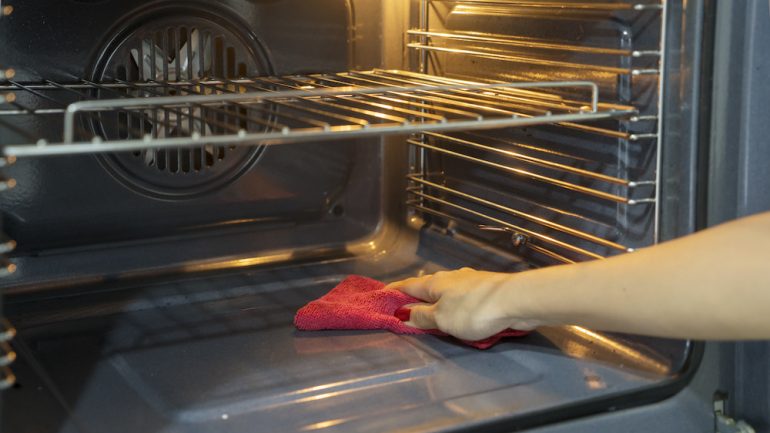When baked-on food spills coat the inside of your oven, it’s time for a cleanup. You can avoid noxious oven cleaner sprays and mad scrubbing with a self-cleaning oven. But there are important things to know about using your oven’s self-cleaning feature.
How self-cleaning ovens work
There are two types of self-cleaning ovens: steam cleaning and high heat. Here’s how they work.
With a steam-cleaning oven, you pour a cup of distilled water into the bottom of the oven cavity and start the self-cleaning function. The oven heats to 250 degrees or higher for a couple of hours, which converts the water to steam and softens the baked-on food. After the self-cleaning cycle ends and the oven cools, you wipe down the interior until clean. You may still have to scrub to remove some spills.
High-heat self-cleaning is a superior method. When you start the self-cleaning function on these ovens, the oven either locks itself or you must do so manually. The oven heats to between 800 and 1,000 degrees and stays there for two to six hours. The high heat reduces the caked-on food to ash. Afterward, you simply wipe out the ash.
Are there drawbacks to self-cleaning ovens?
Although the high-heat self-cleaning method results in a pristinely clean oven, there are potential drawbacks.
If the oven is heavily soiled, the high heat can produce smoke and fumes. On rare occasions, the process can produce carbon monoxide. For these reasons, it’s important to run the vent hood over the oven during the cleaning cycle and/or open nearby windows. Keep pets and children out of the kitchen while using the feature.
Long or too-frequent high-heat cleanings can sometimes damage electronic parts and disable the oven. Run your oven’s high-heat self-cleaning function only once a year unless the oven becomes heavily soiled more often. Run it only the briefest time possible. And avoid cleaning right before you’re planning to host guests for holidays or other events, lest your oven be out of commission at the worst possible time.
Some experts recommend supplementing the self-cleaning feature with a separate hand scrubbing once a year with a commercial cleaner, or baking soda and water.
How to use the self-cleaning feature
- Start by reading the owner’s manual on how to operate the self-cleaning function. If you no longer have the manual, you can probably find it online.
- Next, remove the racks from inside the oven and clean separately by hand, with hot soapy water.
- Remove any cookware or foil inside the oven. If it is a stovetop range, clear everything from the top. Turn on the vent hood and/or open windows. Start the self-cleaning function.
- After the cycle ends, allow the oven to cool completely. Spread a towel on the floor under the door and use a wet sponge to wipe the inside clean of ash. Enjoy your sparkling clean oven.
Related – How to Keep Stainless Steel Appliances Smudge-Free


